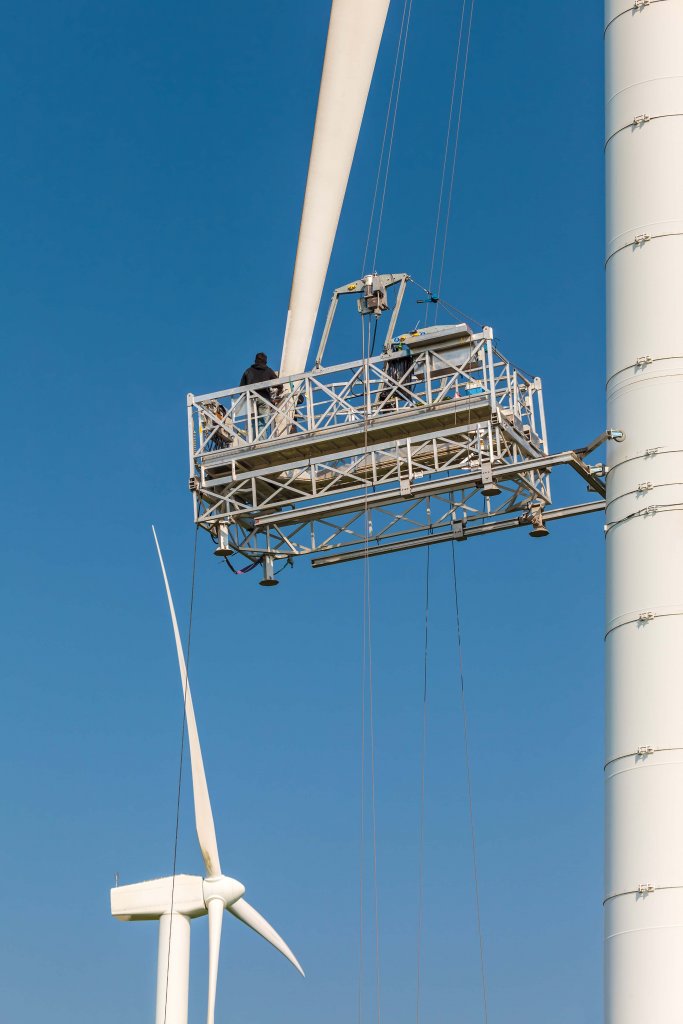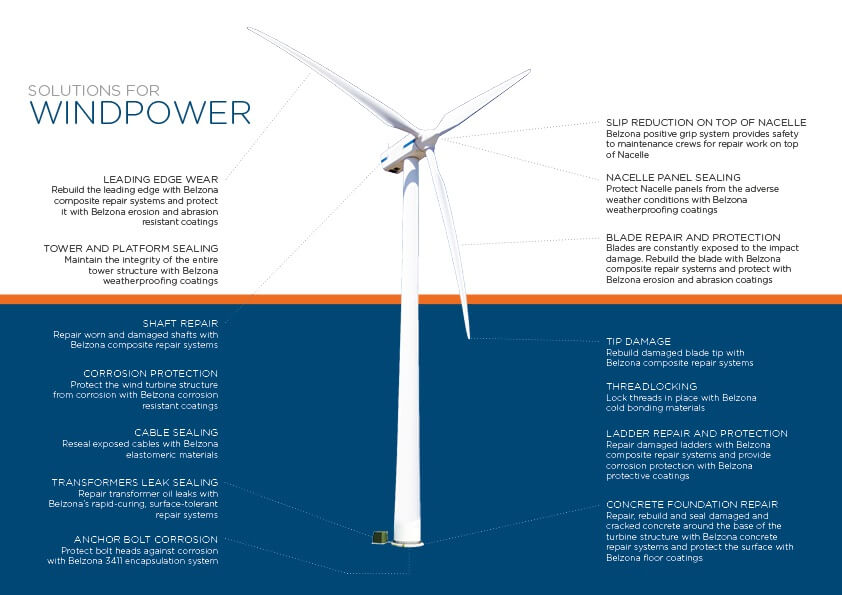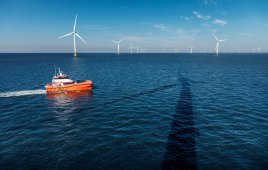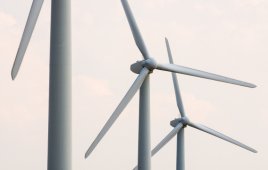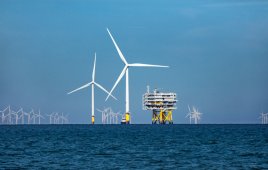Harsh weather and abusive environments are constantly working to lower a wind turbine’s output. To counter them, polymeric repair materials are ready to reverse the effects of nature.
Thomas Belli / Belzon
As funding and support for renewable energy projects begin to outweigh those favoring traditional energy sources, it is necessary for owners to ensure a continued return on their investment. This is successfully achieved in part through effective maintenance of renewable assets and management of the issues affecting them.
The methods of harnessing renewable energy are not without complications, whether through immersion in corrosive sea water, contact with high geothermal temperatures, or aggressive abrasion imposed by gale force winds. Capturing renewable energy involves exposure to the elements, some of which can wreak havoc on machinery, equipment, and structures used throughout the industry. This is true for geothermal, solar, tidal and wind power, all of which suffer from a variety of different damage mechanisms.
Like the maintenance of other industrial assets, owners and operators require cost-effective solutions that can be carried out quickly and easily, yet ensure long-term results. Experienced at meeting these requirements, while combatting corrosion, erosion and chemical attack, companies such as Belzona, have established themselves as providers of polymeric solutions for a variety of maintenance issues in most power generation markets. As a result, the transition to the repair and protection of renewable equipment and facilities has been particularly successful. The biggest progress has been made in the wind power industry, where polymeric materials have been able to solve maintenance problems present from the base of the turbine to the tip of the blades.
Edging ahead
Offshore wind farms have perhaps been the biggest beneficiaries of the vast investment in new renewable infrastructure. In total, capital spending commitments for this form of green energy reached a record $30 billion in 2016 2. Furthermore, offshore wind-farm projects are under construction in European waters that will provide 27 GW more of capacity. This significantly adds to the global wind power capacity of 433 GW logged in 2015 7. Despite being one of the leading forms of renewable energy, the design of wind turbines and the environments within which they operate pose a variety of problems from a maintenance perspective.
Polymeric solutions can be applied to many places on turbines. The accompanying diagram with callouts, Solutions for windpower, shows the application locations for other polymeric materials.
Corrosion of components and foundation damage are two big maintenance issues. However, it is recognized that the single largest problem for the wind power industry is leading-edge damage. In high winds, blade tips can reach 190 mph (300 km/h) along with widely fluctuating temperatures, humidity levels, and rates of UV exposure. In addition, the impact damage and abrasion from rain, dust, ice, insects, birds and lightning can cause substantial erosion of the substrate. Evidence suggests that damage to the leading edge can lower the Annual Energy Production of a wind turbine by 4 to 20% 3. This generates a reduction in aerodynamic efficiency, affecting the energy output as well as exacerbating damage to other turbine components. An imbalance between blades can cause wear and damage in the shaft and gearbox, in addition to putting further stresses on the tower and base. Overall, this reduces the tower’s operational life expectancy.
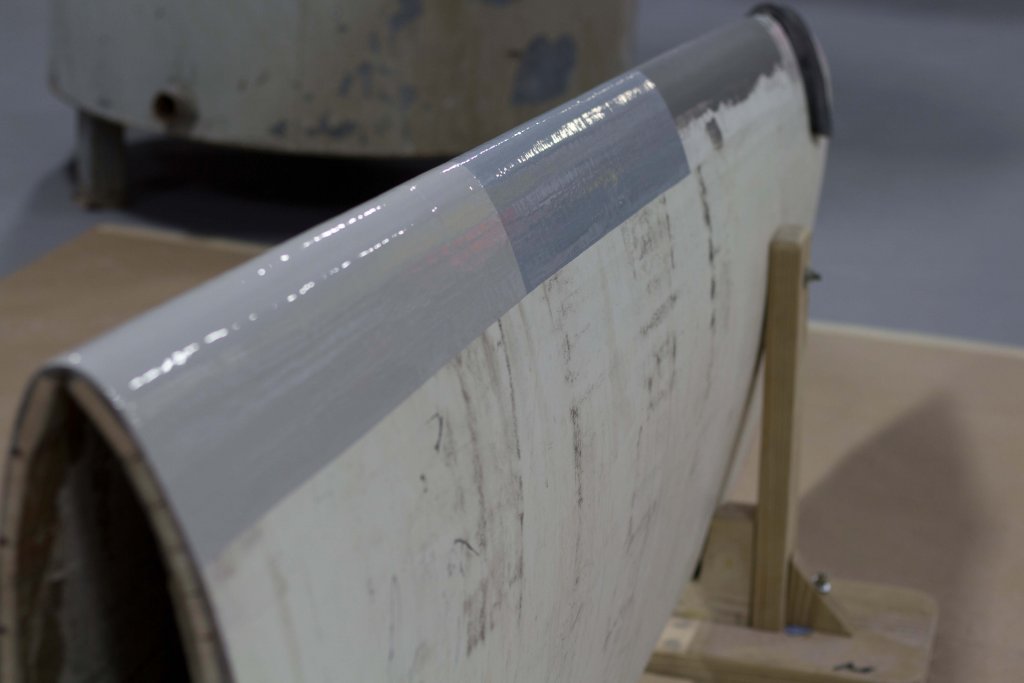
The blade section has been rebuilt and coated with leading edge protection from Belzona 1341 (Supermetalglide). One OEM reports that blades so treated are still working well 10 years after the repair.
Severely damaged turbine blades can result in energy losses of up to 20%. Alternative solutions for the blade wear problem include fillers, binders, and tapes, yet none of these will provide extensive, long-term repair and protection.
In these scenarios, repairing the damaged substrate is easily achieved with a proven range of reconstructive composites and protective coatings.
For example, after sanding the damaged area and adequate surface preparation, Belzona 1121 (Super XL-Metal) adheres well to FRP substrates when it is necessary to rebuild an eroded blade to its original specifications. As a protective layer, the molded surface can be overcoated with a range of erosion and corrosion-resistant epoxy systems from the company. Brush-and spray-applied, they offer a high level of durability and flexibility for the threats of abrasion and impact. Rather than simply a reactive option, these solutions can be applied proactively at OEM stage, protecting the most threatened areas before entering service. One turbine OEM has specified a proprietary protective coating for the leading edges of its turbine blades during manufacture 4. Over an estimated 10 years since the original installation across sites throughout the U.S., these blades have withstood the effects of erosion beyond their anticipated life expectancy.
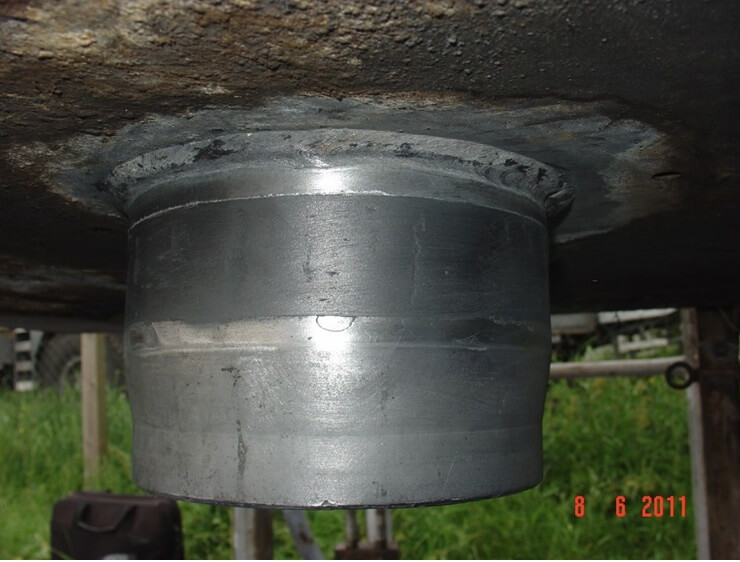
Workers have reformed the yaw drive shaft using self-lubricating, metal repair material Belzona 1131.
Not just leading-edge damage can be rectified to improve the output and operation of wind turbines. Other major issues that befall these structures involve components in the nacelle. For instance, protecting brake drums, sealing cables, as well as the repair of worn and damaged shafts are easily made using Belzona’s polymeric solutions.
Meanwhile, the integrity of nacelles, towers, and platforms can all be maintained using seamless, weatherproof, and waterproof protective coatings. These can maintain wind turbines despite the often adverse weather found in their operational environments.
In addition, it is essential to ensure the stable foundations of these structures. As blades and rotor are built larger (Offshore rotors, in particular, are expected to reach a staggering 190-m diameter by 2030 5) so too must foundations. Such large rotors make firm foundations integral to keeping turbines upright. Consequently, the repair and rebuild of concrete around the base can be achieved with concrete repair systems and the surface protected with specialized coatings, such as those from Belzona.
Impact on geothermal and tidal power
Although there is an array of maintenance products in place for wind turbines, it does not mean that other renewable energies are neglected in terms of their repair and protection. The stresses placed upon the likes of tidal, wave, and geothermal energy, are displayed in many of the industrial environments that Belzona operates. Therefore, the solutions adept at resisting corrosion, erosion, and chemical attack will translate well into these new application scenarios.
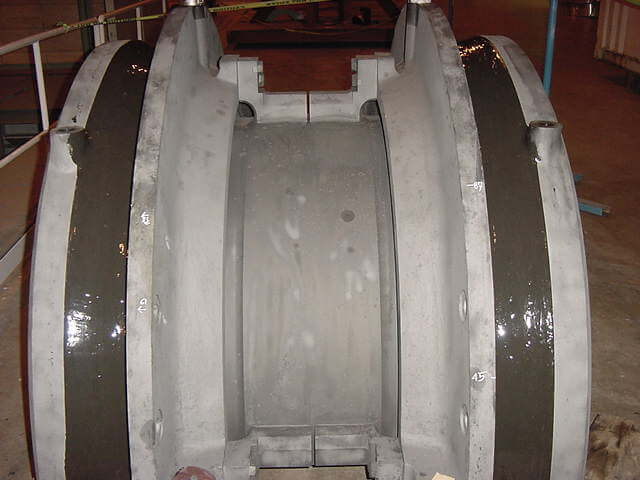
Belzona polymeric materials helped to reverse the erosion-corrosion damage (under the dark grey coatings on either side) on a stationary blade holder at a geothermal plant.
For example, the characteristics of geothermal fluid can vary significantly, including temperature, chemistry, and non-condensable gas content (NCG), all of which can have an extremely corrosive effect on power-plant components. The negative impact on the efficiency and function of the geothermal power plant can manifest in pipes, turbine casings, heat exchangers and tanks, all machinery and equipment which Belzona has experience at safeguarding. According to reported statistics on the state of geothermal technology, the use of corrosion-resistant materials, such as protective coatings, can reduce production costs by an estimated 0.25 ¢/kWh 6. When extrapolated to the global electricity generation of geothermal resources in 2015 (71 TWh) 7, savings through corrosion mitigation can exceed well over $100 million, while also helping improve the efficiency of deteriorated equipment.
At sea level, water is 784 times denser than air, so tidal turbine rotors can be much smaller but generate electricity equivalent to some wind turbines. Cavitation, a problem that manifests itself because of a pressure difference in a fluid, is prominent in this situation and can threaten the integrity of the blades, much like erosion on wind turbine blades. By employing a cavitation and erosion resistant coatings, the in-service life of tidal turbines can be extended, protecting them against deterioration emanating from turbulent flow.
The growth of green energy
The rapid growth of renewable energies in countries such as Brazil and Kenya, make it clear that the world’s emerging economies are showing interest in the low-carbon transformation of renewable energy sourcing. In fact, they are matching many of their better-equipped counterparts. This suggests that green energy is capturing the world’s attention.
As this sector expands, investments of increasing magnitude will continue. However, it is essential that these assets are maintained and remain operational, providing an effective return on investment.
Polymeric repair and protection solutions have proven successful in the power industry and have made notable impressions in the renewable energy market to date. Extensive testing and long-term involvement with industry-leading companies demonstrate that these polymeric systems can effectively manage the frequent issues associated with erosion, corrosion, and abrasion. Renewable energies represent the future landscape of energy resourcing, something which Belzona aims to maintain through the development of new repair and protection systems for global renewable assets.
About the author: Thomas Belli, Marketing Assistant with Belzona since September 2015. The company has a main office in Florida and sales reps throughout the U.S.
For further reading
- Pettit, D. (2017) 2016: A historic year for renewable energy, [Online] Available at: http://tumblerridgenews.com/2016-an-historic-year-for-renewable-energy/. [Accessed: 1st February 2017].
- Thomas, C. (2017) Record $30bn year for offshore wind but overall investment down. Bloomberg New Energy Finance, [Online]. Available at: https://about.bnef.com/blog/record-30bn-year-offshore-wind-overall-investment/. [Accessed 1st February 2017].
- Sareen, A, Sapre, C, & Selig, M. (2014) Effects of leading edge erosion on wind turbine blade performance. Wind Energy, [Online]. 17;1531 – 1542. Available at: http://m-selig.ae.illinois.edu/pubs/SareenSapreSelig-2014-WindEnergy-Erosion.pdf. [Accessed: 10th February 2017].
- Kawano, M; Hayashi, N; Kuroiwa, T; & Nakamura, N. (2014) Wear control apparatus and wind turbine blade monitoring system including wind turbine blade. MITSUBISHI HEAVY INDUSTRIES LTD. [Patent] US 8739612 B2. Available at: http://bit.ly/2kph3i1 [Accessed: 4th January 2017].
- Metcalfe, J. (2016) The Future of Wind Turbines is Enormous. City Lab, [Online]. Available at: http://www.citylab.com/tech/2016/12/how-large-can-wind-turbines-get/509678/. [Accessed: 15th February 2017].
- Kagel, A. (2008). The State of Geothermal Technology Part II: Surface Technology. Geothermal Energy Association, [Online]. 2, 6. Available at: http://bit.ly/2kwQiDw[Accessed: 4th January 2017].
- REN21 (2016). Renewables 2016 Global Status Report, [Online]. Available at: http://www.ren21.net/wp-content/uploads/2016/10/REN21_GSR2016_FullReport_en_11.pdf. [Accessed: 11th December 2016].
Filed Under: O&M, Uncategorized

